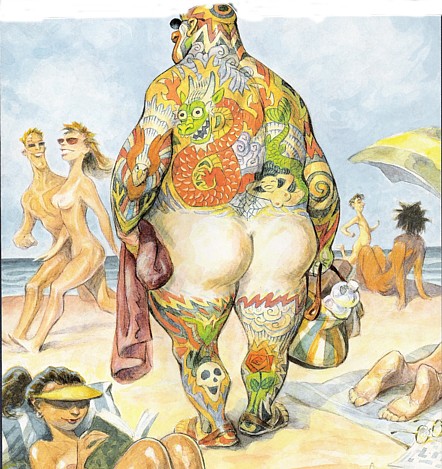|
Polar bears are not white, they’re clear. Their transparent fur doesn’t contain a white pigment, but the hair shafts house many tiny air bubbles, which scatter the sun’s white light, and we register the spectacle as white fur. The same thing happens with a swan’s white feathers, and the white wings of some butterflies. We tend to think of everything on earth as having its own deep-down rich color, but even razzmatazz colors that hit one’s eyes like carefully aimed fireworks are just a thin rind on things, the merest layer of pigment. And many objects have no pigment at all, but seem richly colored nonetheless because of tricks played by our eyes. Just as the oceans and sky are blue because of the scattering of light rays, so are a blue jay’s feathers, which contain no blue pigment. The same is true of the blue on a turkey’s neck, the blue on the tail of the blue-tailed skink, the blue on a baboon’s rump.
-- Diane Ackerman, A Natural History of the Senses

|